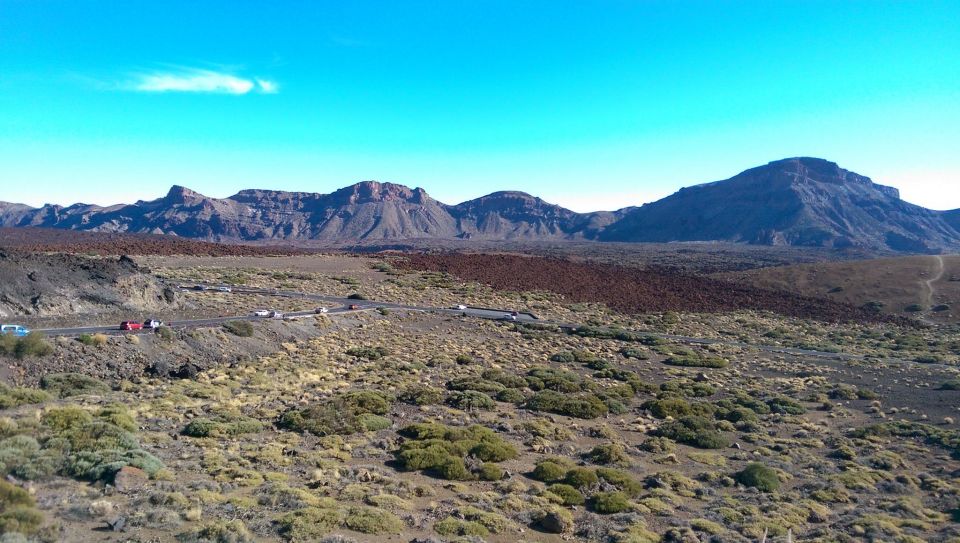
Teide caldera, Tenerife, 2016.
Cite as:
Clormann, Michael. 2019. "Removed Spaces." In "Social Studies of Outer Space." In Innovating STS Digital Exhibit, curated by Aalok Khandekar and Kim Fortun. Society for Social Studies of Science. August.
This essay is part of the meta essay on the Social Studies of Outer Space group. Another essay related to the shared question of "why is this STS innovation needed?" can be found at Tackling the New Age of Space.
Latour, Bruno. 1987. Science in Action: How to Follow Scientists and Engineers Through Society. Cambridge: Harvard University Press.
John Law, Annemarie Mol. 2001. "Situating Technoscience: An Inquiry into Spatialities." Environment and Planing D: Society and Space 19, no. 5: 609–621.
Redfield, Peter. 2002. "The Half-Life of Empire in Outer Space." Soc Stud Sci 32, no. 5-6: 791–825.
Furthering its theme, Innovations, Interruptions, Regenerations , the 2019 annual 4S meeting in New Orleans will include a special exhibit, Innovating STS , that showcases innovations ...Read more
All Innovating STS exhibits are oriented by nine shared questions in order to generate comparative insight. These are:
ARTICULATION: What STS innovations (of theory, methodology, pedagogy...Read more
For a few years now, beginning with Peter Redfields study on “The Half-Life of Empire in Outer Space” in 2012, spaceflight activities have raised postcolonial interest: Exploration and exploitation of outer space not only mirror colonialist rationales – they are also largely built upon earthly colonial history. Many rocket launch sites around the world are located in equatorial vicinity – outside of western continental territories and mostly within its remaining colonial zone of influence. While by the spaceflight community this is mostly justified by scientific and technological necessity, politics of empire follow suit. Access to outer space as a geopolitical resource promptly points back to the planetary scale.
Like many launch facilities, ESA’s spaceport in French Guiana, as seen in one of these photos, appears as a place between spaces. Profoundly situated in local materiality, frames of space and time intermingle. Looking at the depicted scenery provides a clue for order as it seems to resemble a colonial dichotomy. On the one hand, untamed space and nature, sparsely populated and weakly infrastructured equatorial wilderness. On the other hand, sociotechnical systems of control and order, a gateway to technologized futures – epistemological, ontological, material, political and economical.
However, both point towards the sky above. Earth’s atmosphere, its orbits and outer space beyond appear as the promise of a new, vast frontier to be conquered and developed while always also referring back to the point of origin of such endeavors.
Interestingly, a similar story can be told concerning those sites not allowing for travel but gazing beyond our own planet. Astronomical sites traditionally have found their places far removed from “civilized” yet disorderly and invasive (from the astronomer’s viewpoint) centers of the western world. Mountaintops and deserts, frequently located at the fringes of colonial empire, offer the promise of pristine, unbiased access to the universe exactly by means of their uncivilized and non-interfering nature. Neither telescope not scientist at work remain disturbed in these laboratories of outward vision.
In this sense, endeavoring outer space as can be done from within the “Spaceship STS” as well as through the scrutinizing gaze of a “Telescope of Theory”, offers new insights not only concerning the metaphorical space traversed but also the vessel and passengers within or the researcher wielding the field’s mightiest equipment. It holds ready new and theoretically relevant perspectives on relating places of, for example, knowledge production and situated technologies. The bidirectional vision of the planetary and the beyond-planetary enables us to become mobiles ourselves in the sense of Bruno Latour.